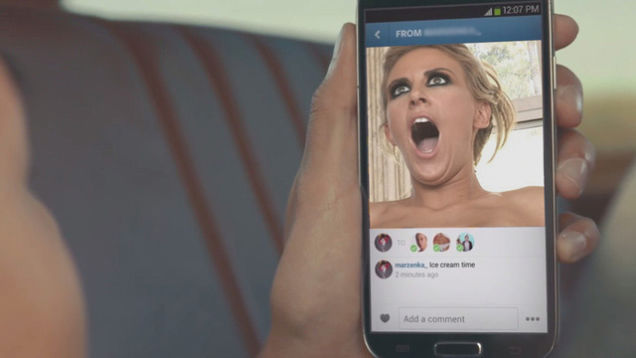There are still too many unknowns about the hack that launched a thousand (well, a dozen or so) celeb nudes over the weekend; how it happened, what’s being done to keep it from happening again. But one thing has become more clear than ever: the need for a “private photo” mode on your smartphone.
That idea, advanced today by the very smart Chris Soghoian of the ACLU — and no doubt previously by others who went unnoticed, lacking a critical mass of naked famous people — is by no means a cure-all for nude photos circulating. But in this case, it sure would have helped:
Apple, Google and the other big tech companies should acknowledge that millions of their customers regularly use their products to engage in sensitive, intimate activities. These companies can and should offer a “private photo” option for sensitive photos that prevents them from being uploaded to the cloud.
Emphasis added, because that is an emphatically wonderful idea. And not a difficult one to implement.
It’s not hard to imagine how it would work; open your stock iOS or Android camera app. Toggle through to your setting. Tap once to activate Private Photo. Voila! Your illicit pics stay on your phone where they belong. No iCloud. No Dropbox. You’d be able to adjust your settings in quickly enough that you wouldn’t upset the lighting, much less the mood. And the only way anyone could get at your fleshy photos would be if they grabbed your phone (and got past the passcode, should you use one) or if you sent them as a Snapchat, because that’s your god-given right as a human person with a body and a very expensive phone equipped with a dual-LED flash.
Yes, you can control sharing already. You probably do, if you’re savvy enough to know that it’s an option. And there are plenty of apps that don’t auto-upload pics. But iOS devices upload photos to iCloud by default, from the minute you sign in with your Apple ID. And it’s a safe enough bet that plenty of iPhone owners don’t even realise they have an iCloud account, much less that they’re beaming their giblets to it every time they take an undressed selfie in the mirror. A setting in your camera app that says, very explicitly, that this is for your most explicit moments? That’s something anyone can understand, even if they don’t know what exactly it does.
In fact, what’s most brilliant about Private Photo is that we’re already conditioned to use it. Any time you pursue the slightest bit of deviance in your browser, you head immediately to Incognito Mode, or Private Browsing, or whatever cone of silence Internet Explorer offers. What does that do, on a technical level? Who cares!, the horny masses cry out, it lets me watch porn without getting caught. Just swap in “create” for “watch” and maybe “an intimate personal portrait” for “porn,” and you’ve got Private Photo mode. Something that keeps your photos on your phone for as long as you want them there.
No, it’s not a complete solution. People will still choose to put their sexytime photos in the cloud for whatever reason, or will forget to go Private. Photos you send to other people directly from your phone are just as vulnerable as the ones you keep in the cloud; sometimes even more so. But we clearly need a better solution than the one we’ve got. Two-factor verification is wonderful, but any security measure is only as good as your ability to convince people to use it. And as a first line of defence, I’ll take something as simple as Private Photo over jumping through authentication hoops any day. Or, as the case might be, slightly drunken night.
